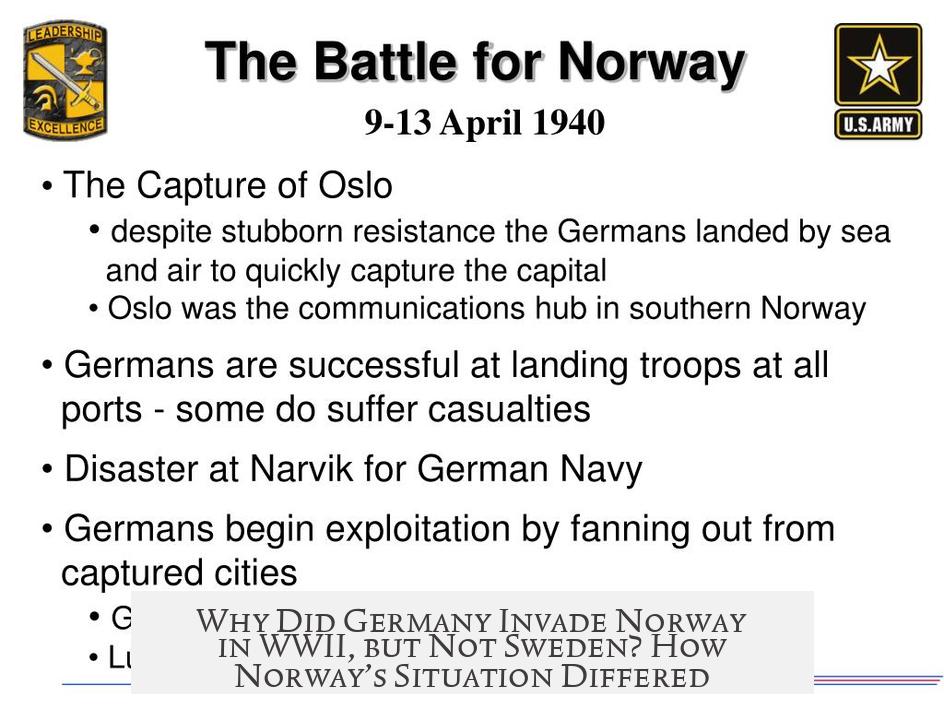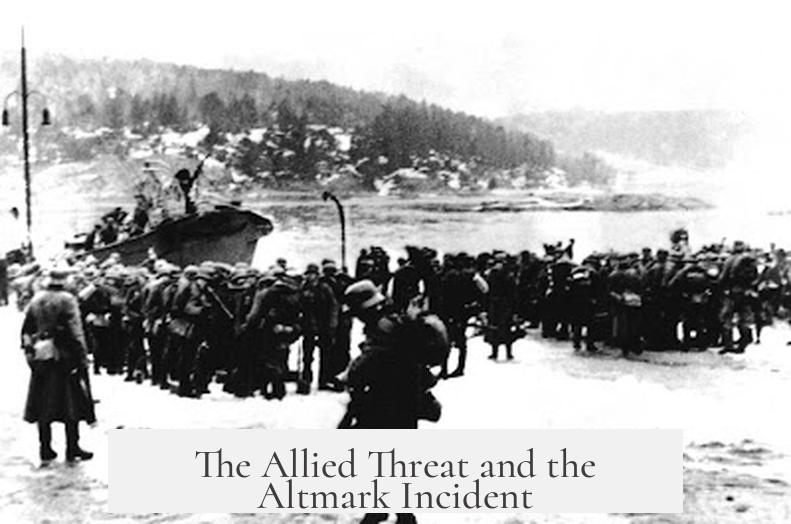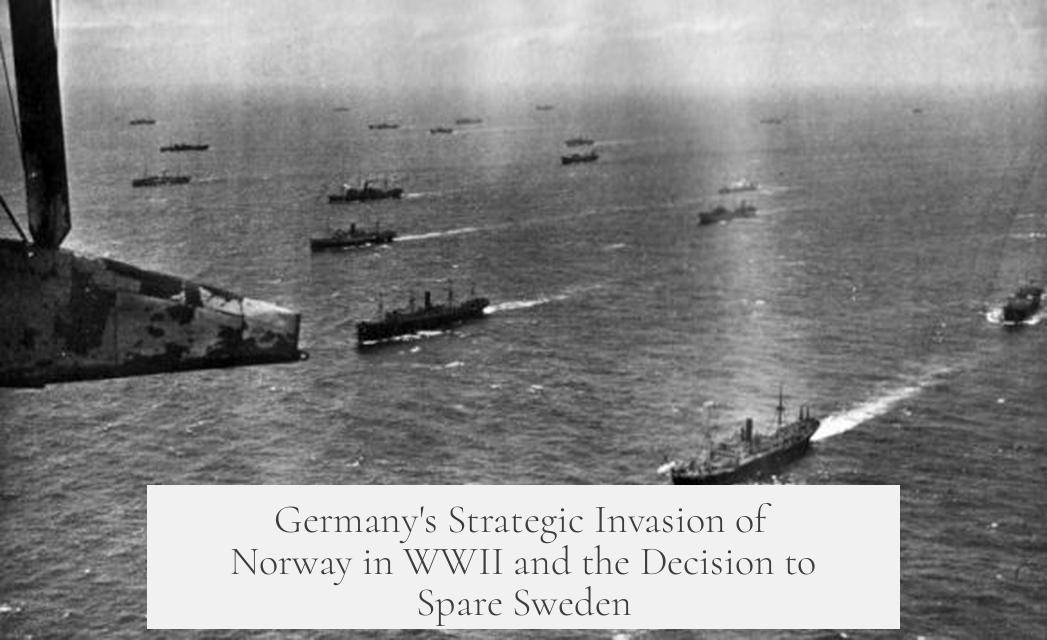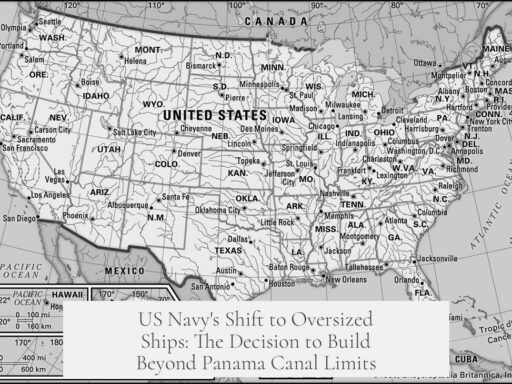Germany invaded Norway in World War II due to strategic, economic, and military reasons, while Sweden remained uninvaded because of its military strength, cooperation with Germany, and logistical challenges faced by the Germans. The key differences in the situations of Norway and Sweden shaped the course of events during the war and influenced German decisions.
Germany’s primary motivation for invading Norway lay in securing vital naval and economic advantages. The German navy feared being trapped in the North Sea due to the British naval blockade. Norway’s long coastline offered critical naval bases that could break this isolation. The German navy pressed Hitler to take preemptive action. Control over Norway’s ports ensured better access for German naval forces to the Atlantic and Arctic Oceans, crucial for supply routes and naval dominance.
Additionally, the importance of Swedish iron ore significantly influenced the German plan for Norway. Germany depended on about 10 million tons of iron ore annually, nearly half of its total requirement. This ore was mined in Kiruna, northern Sweden, and shipped via two key ports — Luleå in summer and Narvik in winter. Nazi Germany needed to secure the Narvik port in Norway to maintain uninterrupted iron ore shipments during winter months when Luleå would freeze. Without control over Norway, these shipments were vulnerable to Allied disruption.
The invasion was also a reaction to Allied plans and provocations. The Allies intended to send troops through Norway and Sweden to support Finland against the Soviet Union. In early 1940, the British and French planned to occupy Norwegian and Swedish ports to safeguard the iron ore supplies and counter German influence. Norway’s neutrality was shaky, as demonstrated by the “Altmark incident,” where British forces seized a German vessel in Norwegian waters without any Norwegian intervention. This convinced Germany that Norway would not defend its neutrality, prompting a swift invasion ahead of British moves.
Denmark’s invasion was part of the Norway campaign, primarily to secure airfields like Aalborg. Such positions facilitated German air support for ground forces during the Norway attack, illustrating the intertwined nature of Scandinavia’s geography in German strategy.
Sweden’s situation contrasted markedly. Germany evaluated an invasion of Sweden as too resource-intensive and strategically unnecessary. The Swedish armed forces maintained enough strength to deter any efficient German assault. Furthermore, the German military was already stretched thin by the ongoing Norwegian invasion, which depended heavily on surprise and luck to succeed.
Sweden’s compliance also weakened the rationale for invasion. Between August 1940 and June 1941, Sweden supplied Germany with almost any materials requested, including iron ore needed for the war industry. Its geographic position left it dependent on German coal and the permission for ship traffic through the blockade-affected North Sea to secure food imports. Sweden’s political alignment remained neutral but pragmatic, maintaining trade relations crucial for both its own survival and German war efforts.
Logistical considerations were significant. Germany lacked the troop numbers and transport capacity to mount simultaneous invasions of Norway, Denmark, and Sweden. Any invasion of Sweden would involve massive resource diversion and complex campaigns through a region surrounded by friendly states or German-occupied territories. In practice, fighting over Sweden’s iron ore supply occurred in Norway, where the Allies and Germans clashed for control of shipping routes and ports.
A military comparison highlights this difference. Norway’s armed forces in April 1940 were relatively weak and unprepared, making an invasion more feasible. In contrast, Sweden’s military was much stronger and more prepared, raising the costs and risks for Germany. The strength of the Swedish military and its defensive posture meant Germany preferred to keep Sweden as a compliant neutral rather than an occupied enemy.
In summary, Germany invaded Norway but not Sweden because Norway provided critical naval bases, access to the Atlantic, and essential port control for iron ore shipments during winter. The Norwegian military’s weakness and the threat of Allied occupation pushed Germany to act rapidly. In contrast, Sweden’s stronger military, cooperation with Germany, and the substantial logistical burden made invasion unfavorable. Sweden served as a cooperative neutral state, supplying resources while avoiding direct conflict.
- Germany invaded Norway to secure naval bases and protect winter iron ore shipments through Narvik.
- The weak Norwegian military and Allied intentions increased German urgency for invasion.
- Denmark was invaded to facilitate air support for the Norway campaign.
- Sweden’s strong military and German cooperation made invasion unnecessary.
- Logistical limits and stretched German forces prevented simultaneous invasions.
- Sweden’s compliance with German demands maintained its neutral status despite the war.
Why Did Germany Invade Norway in WWII, but Not Sweden? How Norway’s Situation Differed

Germany invaded Norway during World War II primarily because Norway’s strategic position and resources were vital for their war effort, while Sweden’s situation—its military strength, political stance, and geographic factors—made an invasion less attractive and more complicated. This decision reveals a fascinating tale of geography, military strategy, and resource control.
So why Norway and not Sweden? Let’s unpack this story.
The Strategic Prize: Norway and the North Sea
Imagine being a German naval officer in 1939, worried about the British blockade in the North Sea. The British Royal Navy dominates these waters and threatens to trap German ships. What do you do? You want to secure bases to counteract this blockade. Norway’s coastline, stretching far north, offers exactly that—naval bases and airfields to break out into the Atlantic.
The German navy pressured Adolf Hitler to take action. Norway’s ports, especially Narvik, held an additional treasure: access to Swedish iron ore.
The Iron Ore Connection: Norway’s Role in a Bigger Picture
Both Norway and Sweden were key players due to iron ore shipments. Germany’s war machine gulped down nearly 20 million tons of iron ore yearly, half sourced from Sweden’s Kiruna mines. But here’s the twist: during winter months, iron ore was shipped from Kiruna down to Narvik, Norway, to reach the Atlantic via ice-free ports. In summer, shipments ran through Luleå in Sweden. Control over Narvik meant control over this crucial winter supply route.
Why not just take Sweden’s ores directly? That’s a good question—and it leads us to the story of alliances, military readiness, and political calculations.
The Allied Threat and the Altmark Incident

The Allies weren’t sitting still. Early 1940 plans existed to march through Scandinavia to reach and disrupt Swedish iron ore mines. British and French forces wanted to aid Finland and threaten German resources by moving through Narvik, Kiruna, and Luleå. Sweden, however, denied transit rights, but the Allies considered pushing through anyway.
Then came the Altmark incident in February 1940, a dramatic event where a British destroyer seized a German merchant ship in Norwegian waters despite Norway’s presence and inaction. The message to Germany was clear: Norway couldn’t be trusted to uphold neutrality or defend against British actions.
Germany’s conclusion? If the British can operate freely in Norwegian waters, Germany had to act fast and secure Norway before the Allies could establish bases there. The invasion was a preemptive move to thwart allied ambitions.
Denmark as the Gateway
Denmark’s story is brief but important. Germany invaded Denmark swiftly to unlock a critical stepping stone: the Aalborg airfield in northern Denmark. This airfield became vital for supporting German forces pushing into southern Norway. Denmark’s takeover was less about its own value and more about enabling a larger plan to control Norway.
Why No Invasion of Sweden?
Now, why didn’t Germany invade Sweden? Several factors come into play:
- Military Strength: Sweden had a formidable military in April 1940. The German forces wouldn’t want to stretch themselves too thin by opening a new front against a strong defense.
- Resource and Capacity Constraints: The daring Norway operation nearly maxed out the German navy and merchant marine. Adding Sweden meant even more troops and resources at a time when Germany juggled multiple fronts.
- Political Compliance: Sweden was cooperative with Germany, supplying iron ore, coal, and other essentials willingly from August 1940 to June 1941. Why fight when you get what you need through diplomacy?
- Geographic & Political Buffer: Sweden was surrounded by countries that had to be invaded first for any assault. The battles over iron ore and control happened on Norwegian soil, acting as a buffer zone.
This made invading Sweden more trouble than it was worth for Hitler’s Germany. They achieved their goals by controlling Norway and leveraging Sweden’s cooperation.
Comparing Armed Forces: Norway vs. Sweden

When we dig into the numbers from April 1940, Norway’s armed capabilities were limited. They had smaller armies, fewer planes, and weaker naval power compared to Sweden. Invading Norway was a calculated risk, but its defenses were manageable. Sweden’s military, on the other hand, was robust enough to caution the Germans against an easy invasion.
For Germany, the math was simple: Norway offered a rich reward with manageable risk, while Sweden demanded a costly campaign that could drain resources.
In Summary: A Game of Strategy, Resources, and Timing
Germany’s invasion of Norway but not Sweden boils down to:
- Securing critical naval bases along Norway’s coast to break the British blockade.
- Controlling Norway’s ice-free ports, especially Narvik, for iron ore shipments vital to the German war effort.
- Preempting Allied plans to capture Norwegian territory and iron ore supply routes.
- Utilizing Denmark as a vital staging ground to secure Norway.
- Recognizing the strength of Sweden’s military and opting for cooperation over costly conflict.
Germany’s decision wasn’t a simple “yes to Norway, no to Sweden”—it was a complex strategy balancing risks and rewards. In the end, Norway’s situation—geographically, militarily, and politically—was uniquely vulnerable and valuable.
What can we learn here? Sometimes in warfare, the value of a country isn’t just in its soil or people but in where it sits on the map and how it fits in a bigger puzzle. Norway’s coast, ports, and position turned it into a prize, while Sweden’s strong defenses and diplomatic approach made it a less tempting target.
History always teaches us that behind every invasion, there lies a web of strategy, resource needs, and timing—making every military decision a game of chess rather than brute force alone.
Why did Germany invade Norway but not Sweden during WWII?
Germany invaded Norway to secure naval bases and control key ports like Narvik.
This was vital for protecting iron ore shipments and countering British blockade threats.
Sweden was not invaded because it was better defended and Germany lacked resources for both invasions.
How did the situation in Norway differ militarily from Sweden?
Norway’s armed forces were weaker compared to Sweden’s strong military in 1940.
This made Norway easier for Germany to attack and occupy quickly.
What role did the Allied plans influence Germany’s invasion of Norway?
Allied attempts to aid Finland via Norway raised German fears.
Germany attacked first to prevent Britain and France from gaining footholds in Norway.
Why was controlling Norwegian ports like Narvik so important to Germany?
Narvik was crucial for shipping Swedish iron ore to Germany, especially in winter.
Maintaining this supply line was essential for German war production.
How did Sweden’s cooperation with Germany affect its invasion risk?
Sweden supplied resources and allowed some shipments, reducing invasion pressure.
This cooperation made invasion less necessary and risky for Germany.




